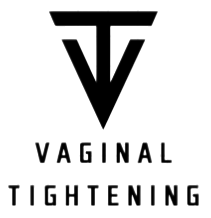In the rapidly evolving world of dental care, advanced procedures and cutting-edge technology are revolutionizing oral health, making treatments more effective, efficient, and comfortable than ever before. Traditional methods, while still valuable, are increasingly complemented or even replaced by innovations that offer enhanced precision, reduced discomfort, and faster recovery times. One such advancement is the use of digital imaging, which has transformed diagnostics and treatment planning. Techniques such as Cone Beam Computed Tomography CBCT provide three-dimensional images of the teeth, jaws, and surrounding structures, allowing for more accurate assessments and detailed treatment plans. This technology not only improves diagnostic accuracy but also enhances the precision of procedures, from implant placements to orthodontic treatments. Another groundbreaking development in dental technology is the use of laser dentistry. Lasers offer a less invasive option for many procedures, such as cavity removal and gum reshaping. The precision of lasers minimizes damage to surrounding tissues and can often lead to quicker healing and less discomfort compared to traditional methods.
 Additionally, lasers can be used for whitening treatments and to reduce bacteria in the mouth, further enhancing overall oral health. The integration of computer-aided design and computer-aided manufacturing CAD/CAM systems has also revolutionized restorative dentistry. CAD/CAM technology allows for the creation of custom dental restorations, such as crowns, veneers, and bridges, with a high degree of accuracy and in a fraction of the time previously required. Patients can now receive same-day restorations, eliminating the need for multiple appointments and temporary restorations. This technology not only improves the fit and function of restorations but also enhances the aesthetic outcomes, as dentist can precisely match the color and shape of natural teeth. Orthodontics has similarly benefited from technological advancements. Traditional metal braces are now complemented by more discreet options such as clear aligners, which use advanced imaging and 3D printing to create a series of custom-made aligners that gradually shift teeth into the desired position. These aligners are less noticeable and often more comfortable than traditional braces, making orthodontic treatment more accessible and appealing to a wider range of patients.
Additionally, lasers can be used for whitening treatments and to reduce bacteria in the mouth, further enhancing overall oral health. The integration of computer-aided design and computer-aided manufacturing CAD/CAM systems has also revolutionized restorative dentistry. CAD/CAM technology allows for the creation of custom dental restorations, such as crowns, veneers, and bridges, with a high degree of accuracy and in a fraction of the time previously required. Patients can now receive same-day restorations, eliminating the need for multiple appointments and temporary restorations. This technology not only improves the fit and function of restorations but also enhances the aesthetic outcomes, as dentist can precisely match the color and shape of natural teeth. Orthodontics has similarly benefited from technological advancements. Traditional metal braces are now complemented by more discreet options such as clear aligners, which use advanced imaging and 3D printing to create a series of custom-made aligners that gradually shift teeth into the desired position. These aligners are less noticeable and often more comfortable than traditional braces, making orthodontic treatment more accessible and appealing to a wider range of patients.
The development of smart toothbrushes and other home care technologies has empowered patients to take a more active role in their oral health. These devices often come with features like built-in timers, pressure sensors, and connectivity to smartphone apps, which provide feedback on brushing habits and help users improve their technique. Such innovations not only promote better oral hygiene practices but also complement professional care, contributing to overall oral health and preventing issues before they require more extensive treatment. Finally, the field of regenerative dentistry is making strides with techniques such as stem cell therapy and tissue engineering. These approaches hold the potential to repair or regenerate damaged tissues, including teeth and gums, offering hope for more permanent solutions to dental issues and even the possibility of future tooth replacement methods that could transform how we approach tooth loss and dental restoration. In summary, the integration of advanced procedures and technologies in dentistry is transforming the landscape of oral health care.
